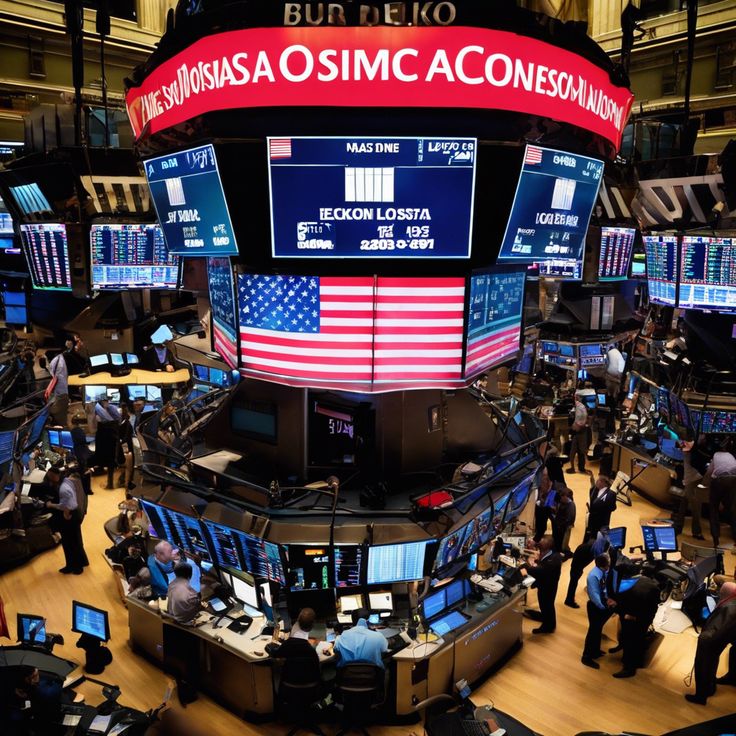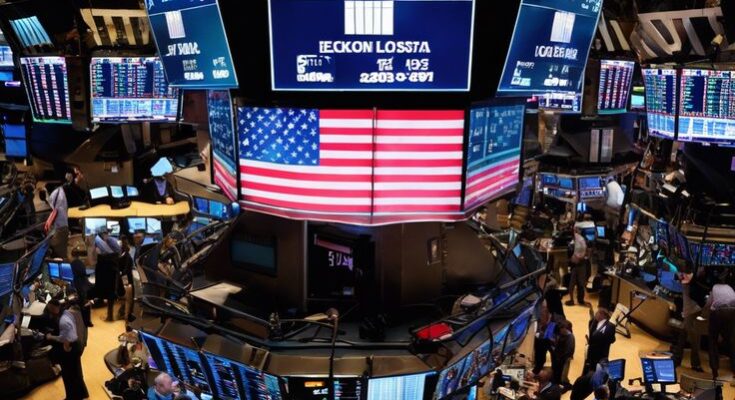The stock market has experienced significant volatility in recent times, marked by large price swings, uncertain investor sentiment, and mixed economic indicators. Volatility, while not unusual, has been more pronounced recently due to a complex mix of factors, including concerns about potential recessions, global economic slowdowns, inflation, rising interest rates, and geopolitical tensions. While tech stocks, which have been the darlings of the market for years, have faced declines, certain sectors, such as healthcare and energy, have managed to perform well. This article explores the causes of current market volatility, the impact on different sectors, and what investors can expect moving forward.
What is Stock Market Volatility?
Stock market volatility refers to the extent to which the price of stocks or indices fluctuates over time. A volatile market is one where prices move sharply in a short period — up or down — creating uncertainty for investors. While some volatility is considered a normal part of investing, periods of high volatility often lead to investor anxiety and uncertainty. These periods can result from various factors, including economic reports, central bank actions, political instability, or unexpected events that disrupt the global economy.

Volatility is typically measured by the VIX Index, also known as the “fear gauge,” which tracks the implied volatility of the S&P 500. A high VIX indicates that investors expect large price movements, while a low VIX suggests stability. Recent surges in the VIX indicate that investors have been pricing in significant uncertainty, with sharp swings in both directions.
Why Has the Stock Market Been So Volatile?
The volatility we’ve seen recently can be attributed to a number of factors that are influencing global markets. Let’s explore some of the key drivers of this uncertainty.
1. Inflationary Pressures and Rising Interest Rates
One of the biggest contributors to recent volatility is inflation. As inflation rates in many countries, especially the U.S., surged to multi-decade highs, central banks, led by the Federal Reserve, began raising interest rates aggressively in an effort to cool the economy and curb rising prices. Higher interest rates generally reduce consumer spending and slow economic growth, which can lead to slower corporate earnings growth and, in turn, lower stock prices.
Interest rate hikes also increase the cost of borrowing for businesses and consumers, which can reduce spending and investment. This has created a ripple effect in the stock market, with growth stocks, particularly those in the technology sector, taking the brunt of the hit. These stocks, often valued on their future growth potential, are highly sensitive to interest rate hikes because the present value of their future cash flows decreases as rates rise.
2. Global Economic Slowdown
In addition to domestic inflationary concerns, the global economy has been facing headwinds. Many countries are struggling with the aftermath of the COVID-19 pandemic, and inflation is not just a U.S. issue but a global one. As nations across the world grapple with supply chain disruptions, labor shortages, and rising energy costs, the overall global economic outlook has been weakening. This, combined with geopolitical risks like the Russia-Ukraine war, has contributed to investor uncertainty and market volatility.
Slower global economic growth directly impacts corporate earnings, as companies often rely on international markets for a significant portion of their revenues. This makes global slowdowns a major concern for investors, especially in multinational companies.
3. Geopolitical Risks and Uncertainty
Geopolitical tensions, particularly the ongoing Russia-Ukraine conflict, have added to the volatility. The war has not only resulted in humanitarian crises but also disrupted global energy markets, leading to soaring energy prices and exacerbating inflation. The conflict has also caused widespread uncertainty in the markets, as investors are nervous about how long it will last and how it could escalate.
Other geopolitical risks, such as tensions between the U.S. and China, have also kept investors on edge. Tariffs, trade wars, and sanctions can all affect corporate profitability, and in extreme cases, they can lead to market corrections as investors adjust their expectations for growth.
4. Earnings Uncertainty and Corporate Performance
Earnings reports from major companies have also been a source of volatility. Many companies, particularly in the tech sector, saw record profits during the pandemic when demand for technology surged. However, as the world returns to a more normal economic environment, the growth rates of these companies have slowed. The combination of higher input costs, labor shortages, and lower consumer demand has made it harder for companies to maintain high growth levels.
When companies report earnings that fall short of expectations, it can trigger a sell-off in their stock, which can quickly spread to the broader market. Conversely, strong earnings reports can give the market a boost, but given the overall economic uncertainty, positive earnings reports often fail to prevent broader market declines.
5. Investor Sentiment and Market Psychology
Stock market behavior is often driven as much by psychology as by fundamentals. In periods of uncertainty, fear and panic can drive market moves, leading to sharp sell-offs or rallies. Investors may sell stocks to protect their portfolios during times of fear, or conversely, panic-buy in response to news of a potential market rebound.
Market sentiment is often amplified by social media, financial news, and the prevalence of algorithmic trading. Small changes in sentiment can lead to large movements in stock prices, as investors react swiftly and with heightened emotion. This “herd mentality” can exacerbate volatility, as fear of losses drives widespread selling.
Impact on Different Sectors
While the entire stock market has experienced volatility, some sectors have been more affected than others. The performance of these sectors often depends on how they are impacted by rising interest rates, inflation, or broader economic conditions.
Tech Sector: The Biggest Loser in the Current Environment
The technology sector has been one of the hardest hit by the recent volatility. Tech stocks tend to have high valuations because investors are willing to pay a premium for future growth potential. However, when interest rates rise, the present value of future earnings declines, making tech stocks less attractive. Moreover, many tech companies are highly reliant on global supply chains and consumer demand, both of which have been under pressure recently.
Companies such as Meta (formerly Facebook), Amazon, and Alphabet (Google’s parent company) have seen stock price declines, partly due to lower-than-expected earnings and slower growth. Additionally, tech companies are facing increased competition, regulatory scrutiny, and rising costs for labor and materials, all of which contribute to a more challenging operating environment.
Healthcare Sector: A Safe Haven
In contrast to the tech sector, healthcare stocks have generally been more resilient during periods of market volatility. Healthcare is often considered a defensive sector because it is less sensitive to economic cycles. People need medical care regardless of economic conditions, making healthcare companies relatively stable during downturns.
Pharmaceutical companies, healthcare providers, and medical device makers have continued to perform well, as demand for healthcare services remains strong. Additionally, with the aging population in many developed countries, long-term demand for healthcare is expected to grow. These factors have made healthcare stocks attractive to investors seeking stability in volatile times.
Energy Sector: Benefiting from Rising Oil Prices
The energy sector, particularly oil and gas companies, has also performed well during periods of market volatility. Oil prices have been volatile, but they have generally remained high due to supply chain disruptions, geopolitical tensions (especially the Russia-Ukraine conflict), and OPEC+ production cuts. As a result, energy companies have benefited from higher oil and gas prices, leading to strong earnings growth.
While the energy sector can be cyclical, it often fares better in times of high inflation, as energy prices tend to rise with inflation. Additionally, the shift toward renewable energy sources has added a long-term growth narrative for energy companies that invest in clean energy.
Financials: Impacted by Rising Rates
The financial sector, particularly banks, can benefit from rising interest rates. As rates increase, banks can charge higher interest rates on loans, leading to greater profitability. However, in periods of heightened volatility, investor sentiment can be affected by fears of an economic slowdown or recession, which can reduce loan demand and increase default risks.
Additionally, concerns about financial instability can cause investors to sell bank stocks. As a result, while financial institutions may see short-term gains from higher rates, they are not immune to broader market risks.
What Can Investors Expect Moving Forward?
Looking ahead, the future of the stock market will depend on several key factors:
- Inflation and Interest Rates: Investors will continue to monitor inflation data closely. If inflation remains stubbornly high, the Fed may continue to raise rates, which could keep the market volatile. However, if inflation shows signs of cooling, the Fed may pause or slow its rate hikes, which could provide some relief to the stock market.
- Earnings Reports: Companies will continue to report earnings, and any surprises — either positive or negative — will likely lead to further volatility. Growth stocks, particularly in the tech sector, will remain sensitive to shifts in economic conditions.
- Global Events: Geopolitical events, such as the Russia-Ukraine war and tensions in other parts of the world, will continue to play a significant role in shaping market sentiment.
- Investor Sentiment: Finally, investor psychology will continue to drive market movements. As long as uncertainty remains high, volatility is likely to persist.



